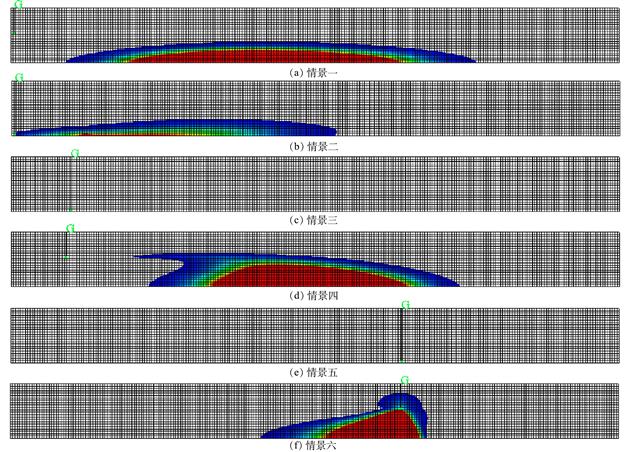| 污染地块巨厚含水层典型DNAPLs运移模拟及安全利用深度评估 |
| |
| 引用本文: | 谢文逸, 姜登登, 李旭伟, 孔令雅, 曹少华, 陈樯, 张胜田, 邓绍坡. 污染地块巨厚含水层典型DNAPLs运移模拟及安全利用深度评估[J]. 环境工程学报, 2022, 16(7): 2287-2295. doi: 10.12030/j.cjee.202201128 |
| |
| 作者姓名: | 谢文逸 姜登登 李旭伟 孔令雅 曹少华 陈樯 张胜田 邓绍坡 |
| |
| 作者单位: | 1.生态环境部南京环境科学研究所,江苏 南京 210042; 2.国家环境保护土壤环境管理与污染控制重点实验室,江苏 南京 210042 |
| |
| 基金项目: | 国家重点研发计划资助项目(2018YFC1803100) |
| |
| 摘 要: | 
江苏省南部地区历史遗留化工污染地块同时存在巨厚含水层(厚度>30 m)和DNAPL类污染物,故导致再开发利用时调查和治理深度难以确定。利用UTChem 模型构建地块二维地下水DNAPLs迁移模型,对巨厚含水层底板上典型DNAPLs(氯仿、1,2-二氯乙烷、四氯化碳、四氯乙烯)随时间推移的迁移扩散情况进行了模拟,并对影响其扩散范围的因素进行了探讨,基于模拟研究结果对此类地块安全利用深度进行了分析。模拟研究表明,不存在抽水井的情况下,经过70 a,含水层底板上4种典型DNAPLs(氯仿、1,2-二氯乙烷、四氯化碳、四氯乙烯)污染羽迁移范围有限,其自底板垂直向上最大迁移距离分别为16.70、16.90、15.20、7.90 m,向下游迁移距离分别为332.12、337.77、322.10、243.40 m。在存在抽水井的情况下,抽水井会显著影响DNAPLs污染羽的迁移范围。影响DNAPLs污染物迁移扩散范围的主要因素为污染物溶解度、密度、黏度、弥散度及渗透系数。本研究结果可为典型化工类型退役地块的风险管控和安全利用提供参考。
|
| 关 键 词: | 巨厚含水层 DNAPLs迁移 污染地块 UTChem 安全利用 |
| 收稿时间: | 2022-02-07 |
|
| 点击此处可从《环境工程学报》浏览原始摘要信息 |
|
点击此处可从《环境工程学报》下载全文 |
|

